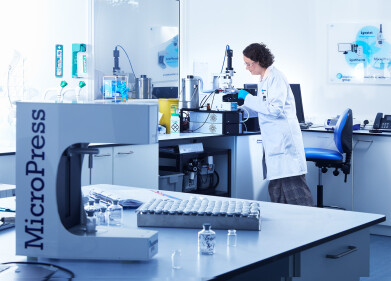Laboratory Products
What is Organ Bioprinting?
Jun 01 2019
In an exciting medical breakthrough, a team of American researchers have developed a new technique that uses 3D bioprinting to create intricate vascular networks capable of supporting human life. The concept is known as 'organ bioprinting' and is notoriously difficult as human organs are incredibly complex. For example, the liver performs more than 500 different functions, a feat of multitasking that researchers have been unable to mimic.
Now, a collaborative team from Rice University and the University of Washington have successfully used 3D printing technology to create replacement organs that feature the sophisticated passageways used to channel blood, air and other vital fluids through the body.
Overcoming the complexities of tissue engineering
Led by Jordan Miller of Rice University and Kelly Stevens of the University of Washington, the project overcame the challenge of tissue engineering by developing open source bioprinting technology known as SLATE, short for Stereolithography Apparatus for Tissue Engineering." Powered by additive manufacturing, SLATE creates individual layers of soft hydrogels using a liquid pre-hydrogel solution. When exposed to blue light the layers become solid enough to maintain their shape, yet sturdy enough to act as internal human organs.
"One of the biggest roadblocks to generating functional tissue replacements has been our inability to print the complex vasculature that can supply nutrients to densely populated tissues," explains Miller. "Further, our organs actually contain independent vascular networks - like the airways and blood vessels of the lung or the bile ducts and blood vessels in the liver. These interpenetrating networks are physically and biochemically entangled, and the architecture itself is intimately related to tissue function. Ours is the first bioprinting technology that addresses the challenge of multivascularisation in a direct and comprehensive way."
Saving lives and reducing drug dependence
The discovery could mark an exciting new era for organ transplant patients, with more than 100,000 people currently on the United States waiting list. Furthermore, those who do receive transplants often rely on immune-suppressing drugs to prevent their bodies from rejecting the new organs. The capacity to bioprint health, functional organs could address the issue of long waitlists, as well as lifetime reliance on drugs.
"We envision bioprinting becoming a major component of medicine within the next two decades," predicts Miller.
Want to know more about how cutting-edge technology is shaping the face of modern medicine? Don't miss 'The Importance of Comminution in Pharmaceutical Analysis', which explores how continually evolving analytical methods calls for constant adaptation of the demanded parameters.
Digital Edition
ILM 49.5 July
July 2024
Chromatography Articles - Understanding PFAS: Analysis and Implications Mass Spectrometry & Spectroscopy Articles - MS detection of Alzheimer’s blood-based biomarkers LIMS - Essent...
View all digital editions
Events
ACS National Meeting - Fall 2024
Aug 18 2024 Denver, CO, USA
Aug 25 2024 Copenhagen, Denmark
Aug 28 2024 Phnom Penh, Cambodia
Sep 04 2024 Chiba, Tokyo, Japan
Sep 04 2024 University of Warwick, Coventry, UK
.jpg)

















